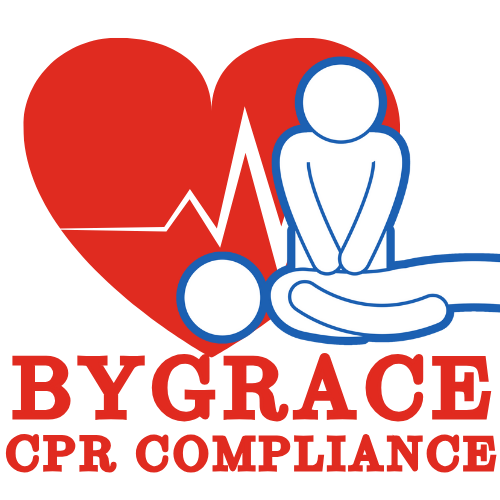****** This blog post is for educational purpose. Always consult your physician for health opinions. *****
Epidemiology
Rhinosinusitis is the symptomatic inflammation of the nasal cavity and the paranasal cavity. Rhinosinusitis is the preferred term when referring to sinusitis because it is a more comprehensive term. According to the American Academy of Otolaryngology—Head and Neck Surgery Foundation, one in eight Americans is affected by rhinosinusitis, resulting in 30 million people diagnosed each year. Healthcare related costs are estimated at $11 billion annually. These costs are related to acute care and emergency department visits and surgical procedures on the paranasal sinuses.Classification of rhinosinusitis is based on the duration of symptoms and includes acute, subacute, and chronic. Acute rhinosinusitis is defined as lasting less than 4 weeks; subacute is 4 to 12 weeks’ duration. Chronic is more than 12 weeks and may include acute exacerbations of symptoms. Acute rhinosinusitis is further classified by etiology as either acute bacterial rhinosinusitis (ABRS) or viral rhinosinusitis. Viral upper respiratory infections that spread to the paranasal sinuses are the cause of most acute rhinosinusitis, which then can lead to bacterial infections. A deviated nasal septum, trauma to the nose, or tumors can interfere with nasal drainage and contribute to the development of acute rhinosinusitis. Annually in the United States, there are about 20 million cases of ABRS, with a resulting healthcare cost of $3 billion. Healthcare needs for the treatment of ABRs include primary care office visits, diagnostic testing, antibiotics, and additional prescription medications for symptom management. The socioeconomic impact of ABRS through indirect costs is also significant because of the loss of workdays and decreased productivity. Acute rhinosinusitis can progress to chronic rhinosinusitis (CRS), which is one of the most common chronic diseases. Fourteen percent to 16% of the U.S. population is affected by CRS. Chronic rhinosinusitis is more common in females, and the presence of nasal polyps is seen in 19% to 36% of patients. Chronic rhinosinusitis results in significant healthcare costs because of repeated visits to PCPs and the use of prescription medications. Chronic rhinosinusitis also has an impact on quality of life due to symptoms and impaired physical functioning.
Pathophysiology
Rhinosinusitis is infection and inflammation of the paranasal sinuses, the four paired air-filled spaces that surround the nasal cavity. They include the maxillary, frontal, sphenoid, and ethmoid sinuses. Inflammation of the nasal passages causes vasodilation, increased blood flow, and vascular permeability, reducing the size of the nasal passages. Nasal congestion occurs as a result of swelling of the nasal turbinates, bony structures along the nasal passages that aid in maintaining moisture and trapping airborne particles. This results in obstruction of nasal airflow. Additional conditions that obstruct the flow of nasal secretions include a deviated nasal septum, trauma to the nose, and tumors. Lack of nasal airflow and increased drainage of nasal secretions provide the medium for bacterial growth. Streptococcus pneumonia, Haemophilus influenzae, and Moraxella catarrhalis are the most common bacterial species in the culture results of patients with acute rhinosinusitis. Additional bacteria that cause rhinosinusitis include Staphylococcus aureus and anaerobes.
Clinical Manifestations
Acute rhinosinusitis is diagnosed by the presence of three symptoms: purulent nasal discharge; nasal obstruction; and facial pain, pressure, and fullness. Normal nasal secretions are clear. In acute rhinosinusitis, nasal secretions are colored or cloudy in nature. Nasal obstruction may be reported as congestion, stuffiness, or blockage of the nasal passages. Facial pain, pressure, and fullness may be located in the anterior face, in the periorbital areas, or as a diffuse or localized headache. The onset of these symptoms in relation to the development of upper respiratory symptoms indicates ABRS.Additional symptoms may include fatigue, fever, maxillary dental pain, cough, and ear fullness or pressure. Nasal or purulent drainage may also be noted in the posterior pharynx. Indications of extra sinus involvement include signs of neck stiffness (due to the development of meningitis), orbital protrusion, cellulitis of the face or orbit, and abnormal eye movement.
Treatment
The focus of treatment in acute rhinosinusitis is based on the etiology. Treatment goals include pain relief, reduction of nasal mucosal inflammation, and treating infection if present. Normal saline irrigation has local effects that reduce symptoms in acute rhinosinusitis. In this procedure, the patient pours or sprays normal saline into one nostril; it flows through the nasal cavity and pours out the other nostril. Irrigation is beneficial in the removal of infectious debris, bacteria, allergens, and inflammatory mediators. It also decreases edema of the nasal mucosa and the viscosity of nasal secretions. Caution must be taken to prevent antibiotic use in nonbacterial illnesses such as viral rhinosinusitis to prevent the development resistance, but in bacterial infections, antibiotic therapy is required. A delay in initiating antibiotic therapy maybe indicated if patient presents with symptoms of non severe illness (temperature less than 101 OF [38.30C] or with mild pain). If after 7 days the patient fails to improve or worsens at any time, antibiotics are prescribed. Amoxicillin or amoxicillin_ of clavulanate is the first-line therapy for most patients with the ABRS because of its efficacy, safety, narrow microbiological spectrum, and low cost. In patients with penicillin allergies, doxycycline, or a respiratory fluoroquinolone such as moxifloxacin or Levofloxacin is used. In patients who fail to respond within 48 to 72 hours of treatment or who have persistent symptoms, second-line antibiotics may be required. Second-line antibiotics most commonly used include second-or third-generation cephalosporins (cefuroxime [Ceftin], cefpodoxime [Vantin]), macrolides(clarithromycin [Biaxin]),fluoroquinolones (ciprofloxacin[Cipro],levofloxacin[Levaquin],moxifloxacin[Aveloxl),and clindamycin (Cleocin). Antipyretics and analgesics are used as needed to control temperature elevation and pain. The use of intranasal corticosteroids is recommended in patients with a history of allergic rhinitis. The use of decongestants can be helpful in reducing obstruction of the osteomeatal complex (the bony structures around the drainage openings of the sinuses), facilitating drainage of the sinuses. Patients with hypertension should use caution when taking oral decongestants due to their action of vasoconstriction to reduce stuffiness, which can increase blood pressure. Medications typically used for symptomatic relief that should be used with caution include antihistamines that may cause drying of secretions, thus impairing mucus drainage, and topical decongestant sprays that, if used for more than 3 days, may result in rebound nasal congestion when discontinued.
Teaching
Symptoms to report to provider Temperature, increase in pain, change in level of consciousness, redness, or edema around the face and eyes can indicate complications of rhinosinusitis. Instruction on correct medication usage. Read the content of the active ingredients and utilize medications as prescribed to prevent overdosing. Start taking decongestants at the onset of symptoms. Complete all antibiotics as prescribed. Limit use of decongestant nasal sprays to less than 4 days to avoid rebound congestion.Proper use of normal saline nasal rinse is as follows:
- Lean over the sink with head tilted to one side.
- Insert the spout of the neti pot or other irrigating device into the upper nostril.
- Slowly pour the normal saline into the upper nostril while continuing to breathe through the mouth.
- Allow fluid to drain out the lower nostril.
Facilitates removal of debris and excess mucus
P.S Don’t forget to call and book your CPR Trainings need through 704-313-8849


Hi, this is a comment.
To get started with moderating, editing, and deleting comments, please visit the Comments screen in the dashboard.
Commenter avatars come from Gravatar.